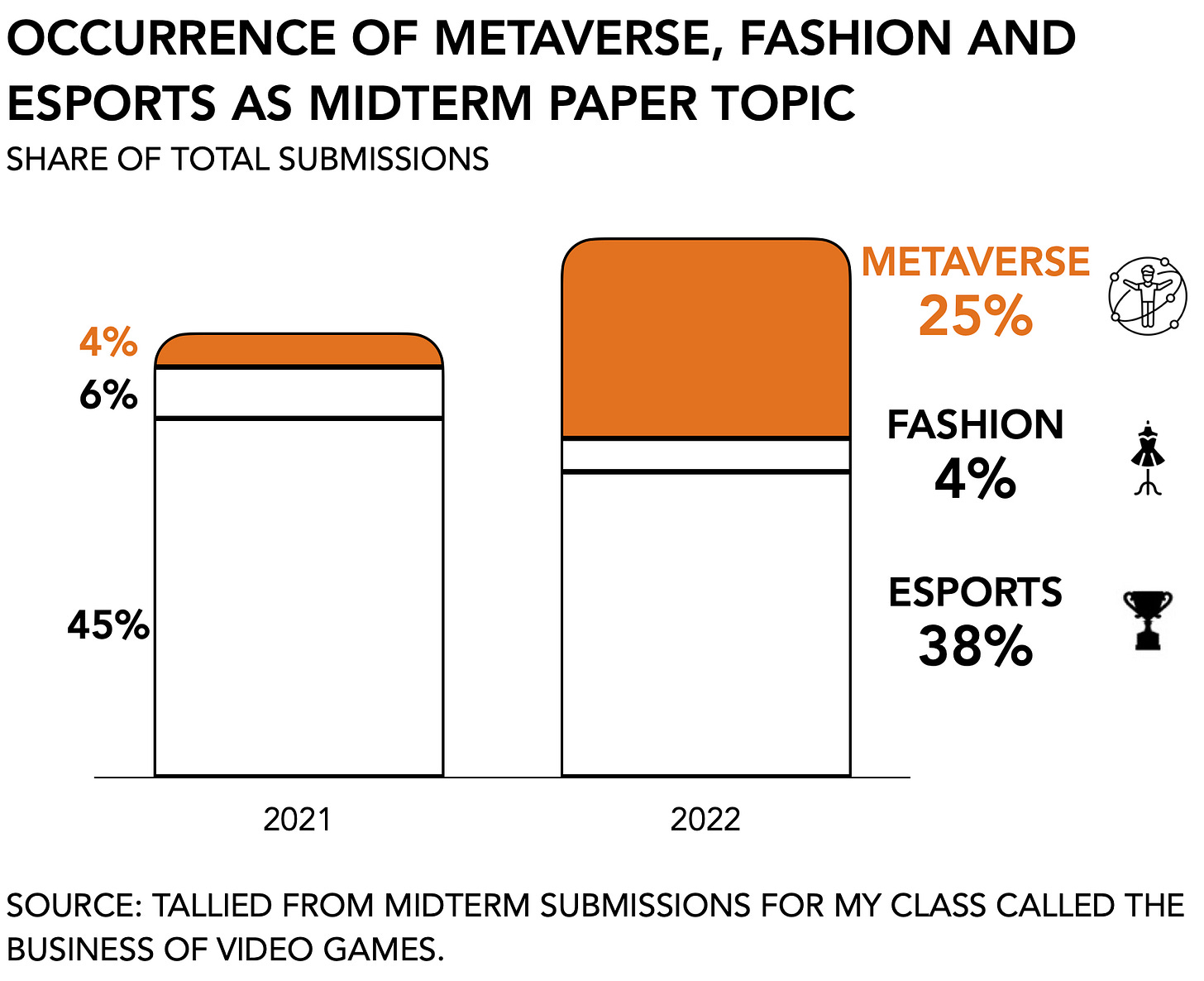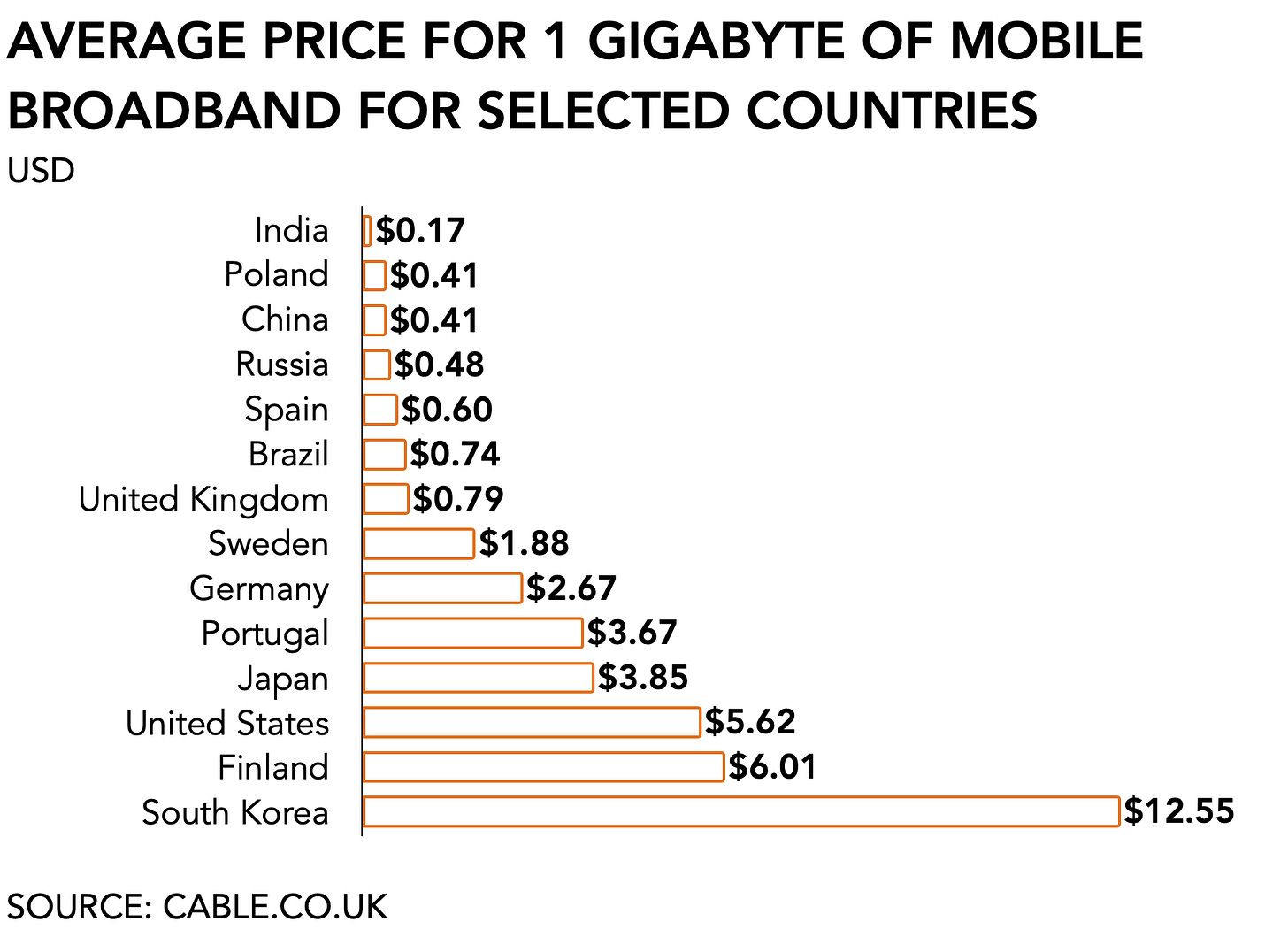Escape fantasies
Future historians will understand us wanting to escape the normalized moral chaos that is daily life. But what are we’re escaping into?
A few years ago I was invited to attend a party at the Playboy Mansion.
After having my picture taken with several ”bunnies” and surviving the obligatory visit to the infamous Grotto (yuck), it quickly became apparent that the demographic distribution of the attending crowd was heavily skewed. Specifically, the ratio of pants to sundresses was roughly one to five.
I did recognize several people from the conference I had attended earlier. The bulk of the crowd, however, did not immediately strike me as mid-level managers in interactive entertainment due to a combination of things. Many were noticeably younger, stuck together in groups of two or three together, barely drank alcohol, told me they had not attended the conference that day nor had plans to, and did not seem to be actively networking or interested in meeting other people at the party. And at exactly 10:00 pm, most of them left. Not one by one, but en masse, as if they had Ubered a single XL pumpkin carriage to whisk them home.
Visiting the Playboy Mansion is, of course, Boomer-grade escapism, a mock Caligulan carnival arranged for business travelers who, away from spouses and children, momentarily pretend themselves at the top of the economic food chain. But this desire to get away from our earthly experience isn’t organized by tax bracket.
In his most recent book, Survival of the Richest, Douglas Rushkoff describes the worldview and associated escape fantasies of the world’s most wealthy. In a conversation with Georgia Institute of Technology professor Janet Murray, they arrive at the observation that the ultra-rich are pushing the envelope of technology to either fly off into outer space like Bezos, Branson, and Musk, or disappear into the metaverse. Even the most wealthy, with their many houses and boats too big for bridges, are actively formulating plans to get away from it all.
Of course, gamers, too, have long been accused of wanting to live in a world void of real-life responsibility. And confronted with dwindling economic prospects and the rising of living, they’ve accepted in kind. To many, it makes more sense to indulge in a low-cost digital life than to pursue one where you work yourself to death, without ever managing to get out from under the debt you owe the world for merely being born into it.
Fast-forward to the type of tech events that have cropped up recently and it is clear that the same middle-aged libido that imagined a night out at the Mansion is now powering the push into Web3, the Zuckerverse, and virtual reality. DJs eagerly rent themselves out to experiment with performances that take place simultaneously in the real world and online.
It is, in fact, a subject that has garnered the attention of many of my students, too. As esports has started to decline somewhat, the number of papers I’ve received this semester exploring the metaverse as a meaningful business strategy has skyrocketed.
Perhaps in a delayed response to the pandemic lockdown, we are treated to a sad excuse for escape fantasies. At least the roaring twenties that followed the 1918 influenza pandemic ushered in a time of jubilation and transition. Economic prosperity, technological expansion (e.g., cars, telephones, air travel, and film), and women’s right to vote and their broader civic participation amounted to cultural flourishing and social change. The roaring 2022s we are witnessing are moving linea recta in the opposite direction.
No future historian would blame us for wanting to escape the moral chaos that somehow normalized into daily life. But we can ask questions about what we’re escaping into. According to Activate Consulting’s annual technology and media outlook, 77% of gamers participated in “metaverse-like non-gaming activities within video games” in the past 12 months. It’s not entirely clear to me what that means, but it sure sounds like everyone’s ready for what’s next. Here’s to hoping it’ll be a bit more savory than a clammy grotto.
On to this week’s update.
P.S. This week I’m testing a new section called Print of the Week. Big-picture perspectives generally emerge from academic journals, recently published books, and other writing that doesn’t lend itself well to quick headlines. Printed text often goes through a different production process than digital writing, including people critiquing, spending time on, and peer-reviewing prior to publication. I’m sharing some of the ones I found worthwhile. Let me know what you think!
NEWS
Activision Blizzard tries to dodge discrimination lawsuit, fails again
Hoping to stop California’s Civil Rights Department, or CRD, from moving forward with its case against the game publisher, which it accuses of sexual harassment and gender discrimination, Activision Blizzard was unable for a second time to have the case thrown out. Arguing that the CRD “failed to comply with its pre-filing obligations before bringing” the case forward, in addition to fueling “a media campaign to tarnish the reputation of Activision Blizzard,” the publisher’s lawyers were disappointed that the Court of Appeals denied a dismissal.
It’s obviously more bad press for Activision Blizzard, especially against the background of Microsoft trying to buy the company. So, too, this failed appeal reads like lawyers just doing their job and protecting their client, but is likely to be taken as another piece of evidence of how evil Activision Blizzard really is. Nevertheless, the slow surfacing of inappropriate conduct and discrimination that is endemic to the games industry is a necessary and painful reconciliation if any of these large publishers and IP holders hope to ascend to global empires of interactive entertainment.
Extremism is the new video game violence
A growing number of terrorist incidents are linked to video games. A man who attacked the husband of US House Speaker Nancy Pelosi with a hammer last week is now said to have been inspired by the far-right movement Gamergate.
Previously I’ve written about how online games can serve as recruiting grounds for extremists and terrorists. Governments around the world have started funding research that looks for possible links between online gaming and extremist behavior. It raises important questions around the issue of whether and, if so, how society may monitor these online spaces to prevent bad people from putting bad ideas in other people’s heads. Gaming, it seems, makes one susceptible to radicalization.
Five years ago, several astute industry observers had already made the connection between GamerGate, arguing it was a trial run for the more widespread, targeted violence that followed. The Pelosi incident dovetails with a growing number of studies, including a recent one that revealed that people who identify as gamers are more prone to violent, racist, and misogynistic behavior. The topic of extremism has become increasingly popular among psychology researchers as people are spending more time playing online.
According to the researchers:
“fusion with gamer culture was uniquely predictive of fight/die for gaming culture, narcissism, psychopathy, hostile sexism, extrinsic racism, and recent aggressive behaviors.”
The study makes no mention of how its findings compare to people who spend an equal amount of time on social media or watching FOX News.
Sadly, we haven’t progressed much in our thinking or understanding. To many, tragic events like the Columbine massacre, where two students killed 12 of their peers and one teacher, provided evidence that video games made people violent, all the while ignoring the abundance of automatic weapons in the United States. Its more contemporary manifestations center on the radicalization and grooming of impressionable, and often lonely, young men. All of the incidents are terrible and tragic, which is why there should be room for a broader investigation and building a better understanding of a generation of media consumers who find themselves financially and socially isolated, and more susceptible to the suggestions of an online “friend”.
Xbox boss says to chill
A notable quote this week came from Phil Spencer, the head of Xbox and the coop owner hoping to soon count Activision Blizzard among its chickens, stating that the famed franchise is going to be free-range.
“Call of Duty specifically will be available on PlayStation. I'd love to see it on the Switch, I'd love to see the game playable on many different screens. Our intent is to treat Call of Duty like Minecraft. This opportunity is really about mobile for us.”
Rival Sony has been complaining to regulators who, in their tardy ignorance about the workings of the industry, have lent their ear, all the while ignoring the market leader’s own battery cage housing five times as many titles and its habit of raising prices.
India’s next run at gaming
For well over a decade, India has been touted as an important growth market for video games. With a massive population of 1.3 billion people, a leading telecom provider like Jio, which controls 36 percent of the market, has more than 420 million mobile broadband subscribers who each average 20 Gigabits of data per month. Its closest rival, Bharti Airtel, claims 32 percent, and Vodafone is a distant third. Such a consolidated market will turn to increase the average revenue per user, especially considering India has the lowest cost in the world of mobile broadband.
Expectations of mobile applications have always been high. However, the government hasn’t seen it that way, and rewrote many of its policies in 2020, restricting popular titles from Tencent, Sea, and Krafton, on grounds of national security concerns.
Over the past two years, evidently, several local game makers have designed localized versions of popular genres. SuperGaming, which raised a $5.5 million series A round in August 2021, is developing Indus, a battle-royale shooter set in an “optimistic India through the lens of sci-fi.”
I’ve previously written on the ‘ABCDs’ of India’s mobile market: Astrology, Bollywood, Cricket, and Devotion. Rather than relying on foreign-developed blockbusters like PUBG and Honor of Kings, the Indian market has seemingly caught up and is now ready to publish its own contemporary designs. With India being a prominent market for expansion plans out of China, Singapore, and South Korea, I’m curious to see if it is capable of developing its own video game industry and what role Indian game makers may come to play globally.
TikTok pushes into gaming with dedicated tab
The Chinese short-form video platform is broadening the scope of its offering after taking a page from Netflix’s strategy book. Adding a button on its homepage that directs users to a selection of mobile games sits at the center of parent company ByteDance’s plan to bring its internally developed titles to the successful platform.
The move comes at a time when two of its rivals, Facebook and Snapchat, have begun winding down their efforts of integrating gaming into their respective social platforms. Moreover, the Chinese government has been piling on restrictions by purposefully delaying approvals of new titles and restricting the amount of time young audiences can play.
TikTok has a massive user base and has so far managed to outmaneuver everyone else. Certainly, successes like Machine Zone and AppLovin show how massive marketing machines manage to become successful in interactive entertainment merely by moving players to their games. Harnessing that technology to drive traffic for third parties like NetEase and miHoYo makes business sense. But I fear it will also result in new challenges for game makers who will have to navigate the dwindling attention span that comes with this type of technology.
📖 PRINT OF THE WEEK: Cloud Empires
The best read I had all week was Vili Lehdonvirta’s book titled Cloud Empires: How Digital Platforms Are Overtaking the State and How We Can Regain Control.
Succinctly, it argues that large tech platforms wield the same type of governing power as nation-states, and what to do about it. Lehdonvirta shows, for instance, how digital platforms facilitate millions of transactions between different actors (e.g., third-party sellers and consumers). As a result, they also handle a massive number of disputes between these different parties to the extent that these organizations come to mediate a vastly larger number of interpersonal transactions than any individual country’s court system. It sets the tone for a deeper investigation into how platform holders have come to play a critical role in a myriad of social interactions.
“…technology ultimately doesn’t change the fundamental social and economic forces that shape how societies are organized. Platform companies don’t appear stately merely by virtue of being powerful but are powerful precisely because in certain important ways they emulate the state.”
Over the course of twelve chapters, Lehdonvirta describes how the underlying logic of platform economies as it relates to network effects, algorithms, privacy, and labor, amounts to a set of cross-national nation-states that govern human interaction and exchange. At the center, he argues,
“the root problem remains: the marketplace is ruled by billionaire technologists and venture capitalists whose interests diverge after a certain point from the interests of the people and businesses who populate the platform.”
If you’re curious about the growing power of platforms and the increasing degree to which regulators struggle to protect consumers and competitive markets, it’s worth a read!
MONEY, MONEY, NUMBERS
Electronic Arts reported $1,754 million in net bookings, which was below consensus ($1,803 million), but within its guidance range of $1,725 - 1,775 million. Despite a tougher, post-pandemic macro-economics and a softening mobile market, FIFA23 held everything upright by selling an extra +10 percent in its first four weeks since release compared to FIFA22. Despite especially younger fans boycotting the World Cup in Qatar, management expects its most important sports franchise to keep momentum.
Sony’s subscription revenue was up, despite a decline in the total number of PlayStation Plus subscribers from 47.3 million to 45.4 million, the third quarterly decline in a row and in spite of its recent revamp. True to its incumbent role, Sony has been raising prices, which means revenue from its Network Services division is up from $679 million to $794 million. The ruling console maker sold 25 million PS5s, of which 3.3 million in the three months leading up to October, and 63 million physical game copies (down -20% compared to the same quarter last year). The numbers suggest an attach rate of 2.5 games per console, which is in line with historical figures. Sony also announced the $549 price tag for its PSVR2, which is still cheaper than Meta’s Onerous Quest Pro at $1,500 but also requires a hard-to-get $500 PS5, pushing the complete Sony VR experience to a smaller subset of players. The base model excludes any titles.
Microsoft reported gaming revenue of $3,610 million, a +0.5 y/y increase. Higher volume and price point drove y/y growth of +13 percent for Xbox hardware, but content and services were down -3 percent due to a content decline and lower engagement. Currently, Xbox Game Pass is holding things upright and the firm announced that over 20 million users have streamed games using its Xbox Cloud Gaming, representing a 100 percent increase from its previous disclosure. According to a legal filing in Brazil that is part of the regulatory review of the MSFT/ATVI merger, Game Pass generated $2.9 billion in 2021. However, since the numbers came out the regulator quickly re-uploaded the documents and removed the tables showing Microsoft’s game services revenue. Nevertheless, the Game Pass subscriber base grew a mere +28% in FY22 compared to the firm’s internal target of +73%, which makes it the second year in a row of missing its objectives.
According to SEGA, the Sonic franchise totaled 1.51 billion in aggregate sold units and downloads as of March this year.
Meta now owns 6 percent of the submarine cables that connect the world. According to the Fair Internet Report, team Zuckerberg has grown its ownership of underwater cables from 10,621 km in 2016 to 80,191 km in 2022. It currently connects 18 countries. (h/t Mr. Metaverse himself)
PLAY/PASS
Play. Researchers discovered that bumblebees like to play, too.
Pass. Candy Crush’s advertising team deploys a swarm of 500 drones into the New York skyline. Not delicious.
Play. Possibly in response to TAG Heuer’s $25,000 Mario Kart watch, Casio has released a much more affordable $150 G-Shock Mario watch.







